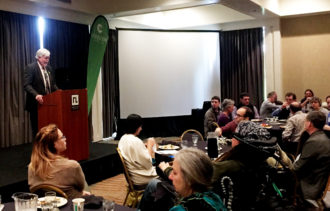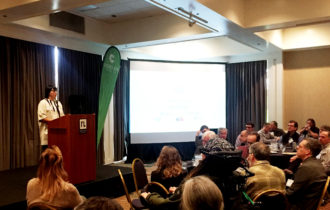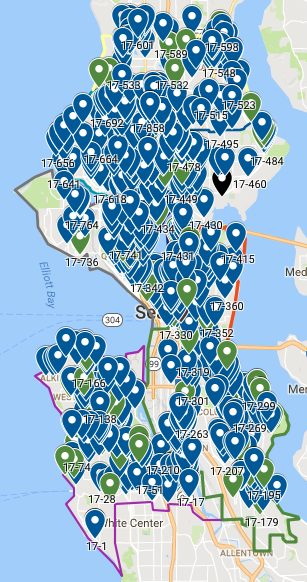
The latest plans out of the Madison BRT project (RapidRide G) cut nearly all of the planned bike improvements that were originally planned nearby as part of the high-budget so-called “multimodal corridor” project.
We reported in depth about the cuts last week, and safe streets groups and upset residents are pushing back. There are several ways you can get involved right now to make sure the project team, city leaders and the Move Seattle Levy Oversight Committee know you want the deleted bike lanes and neighborhood greenways back in the project as was presented during public outreach that began more than two years ago.
First, today (Wednesday) is the final day to comment on the project’s online open house. It takes quite a few clicks to get to the comment area, but stick with it.
Second, Seattle Neighborhood Greenway put out an action alert today urging people to email the project team and SDOT leaders urging them to keep the promises made early in the outreach period and during the Move Seattle levy campaign. They even have a handy online form you can use to send your message. UPDATE: Cascade Bicycle Club also has an action alert.
Third, reader Zach Lubarsky is urging people to provide public comment at the start of Thursday‘s Move Seattle Oversight Committee meeting. Show up at Seattle City Hall Room L280 before 5:30 p.m. to provide a short comment asking the committee to hold SDOT accountable for promises made leading up to the levy vote. (more…)



![Photo from MOHAI: Rally Against the Burke Gilman Trail, Seattle, 1971 Signs in image: Do the Hungry and Needy Really Want [...] Million Trail. [...] Woods [...] in My Yard. Not More Taxes. Who's Paying for This $10 Million Dream? We Don't Want It. Burke Gilman Trail. Enjoy But Who Pays? Who Pays for Upkeep. Photographer: Tom Barlet Image Date: 1971 Image Number:1986.5.55062.1 - See more at: http://www.mohai.org/explore/blog/item/2067-rally-against-the-burke-gilman-trail-seattle-1971#sthash.3mRtlXsn.dpuf](http://www.seattlebikeblog.com/wp-content/uploads/2013/07/getimage-330x242.jpg)







